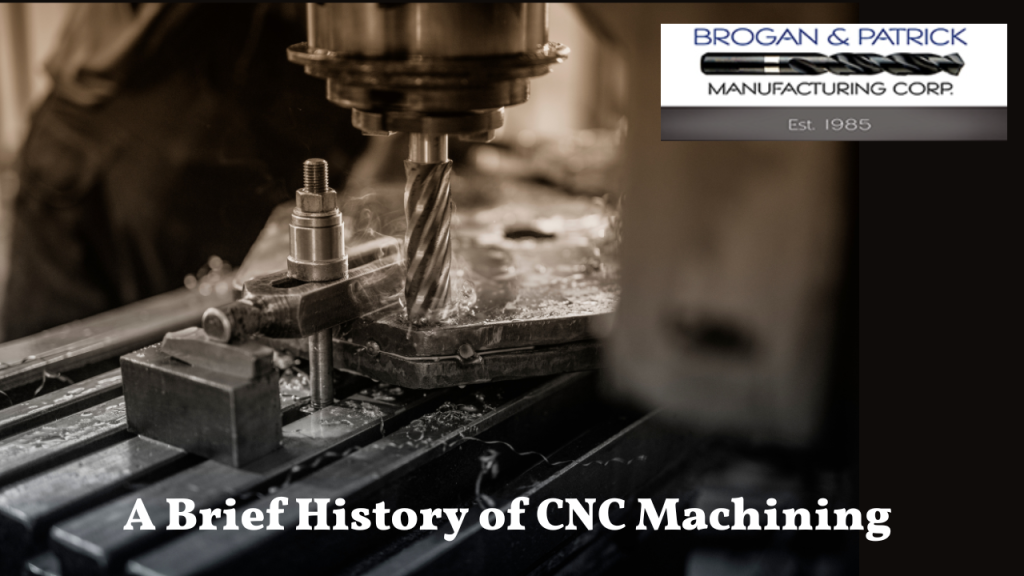A Brief History of CNC Machining
Industrial revolution brought many changes in product manufacturing. One such change was the introduction of machines that could be controlled by a computer. This led to the development of CNC machining, or Computer Numeric Controlled machining. CNC machining allowed for the development of more complex parts faster and accurately than before. While it wasn’t originally embraced by manufacturers, it is now used in various industries due to its accuracy and speed. CNC machining has come a long way in the last hundred years. The technology started out as a tool to help with the creation of artillery shells. It wasn’t until the 1950s that CNC machining began to be used commercially, thanks to the invention of numerical control. Would you like to know more about how the technology has evolved as it is seen today? This post takes you through the history of CNC machining—from its early days as a luxury tool to its current status as a necessary part of many businesses.

Major Milestones in CNC Machining
CNC machining is a subtractive machining technique, which uses cutting tools to remove material from a workpiece. This fabrication method has come a long way since its inception and has revolutionized the manufacturing process. Here are three key milestones that have helped shape CNC machining into the versatile process it is today.
- 1940’s: John T. Parsons was one of the pioneers of CNC machining, helping to develop it into the refined process it is today. In the early 1940’s, he designed an experimental milling machine that could cut and shape metal to produce helicopter blades and stiffer skins for aircraft, which would eventually lead to the development of programmable machines. His work helped to make CNC machining more accurate and versatile, and paved the way for its widespread use in manufacturing today.
- 1940s and 1950s: The 1940s and 1950s were an important time for the development of CNC machining. The first CNC machines were designed during World War II in order to help with the war effort. After the war, these machines were released to the public and was extensively used in various industries. In the 1950s, CNC machines began to be used for more complex tasks such as milling and contouring. As a result, the quality and accuracy of CNC machining improved dramatically. The progress of microprocessors also made it affordable and easy to implement the CNC concept.
- 1960’s to 1970s: The first numerical control (NC) machines were installed during the early days of CNC machining, specifically in the 1970s. In those years, NC machines were used mainly for toolpath generation and machine simulation. The hardware and software that was used at the time was quite limited in terms of function, making it difficult to perform any sort of advanced operations. Despite these limitations, early adopters of NC technology found success with the new technology by taking a different approach to machining that focused on reducing setup time.
- 1980’s and 1990’s: CNC machining has been around since the early days of manufacturing, but it really came into its own during the 1980s and 1990s. The 1980s and 1990s saw the advent of computer numerically controlled (CNC) machining, which revolutionized industrial manufacturing. The ability to program machines to cut and shape material according to specific instructions allowed for unprecedented levels of accuracy and consistency, with reduced waste. This led to increased efficiency and throughout within factories, with products that were formerly produced through labor-intensive processes now being machined automatically.
- 2000’s: The early CNC machines were very expensive, so they were only used in high-volume manufacturing settings. But over time, the cost of CNC machines decreased, and they began to be used in small factories and workshops. By 2000’s, CNC machining had become a new normal in most manufacturing plants with the invention of programs that made numerical control open-source. In the early 2000s, computer-aided design (CAD) software was becoming more common and affordable. This led to a surge in the use of CNC machines for prototyping and small-batch production.
The tools used in CNC machining have evolved over time. Earlier, the tools were massive in size and heavy. They had to be mounted on sturdy tables and floors, as they produced vibrations that could dislodge small pieces from the workpiece or cause the entire work to move if not secured properly. These machines also generated a lot of heat and required a lot of coolant to keep the cutting edges sharp. All this has changed with the development of powerful computers, modern sensors.
Overall, CNC machining technology has undergone many significant changes over that time, with each successive decade bringing new improvements and capabilities. Over the years, CNC machining has evolved and changed to meet the needs of industries, weather it is CNC Plastic machining or metal machining services, and it is now an essential part of manufacturing. Currently, there are many firms offering precision CNC machining services today like Brogan & Patrick. The company have a rich legacy and they will ensure the quality and accuracy of your parts. A long-standing reputation means that they’ve been producing high-quality parts for years, and they likely employ highly skilled workers who are well-versed in the latest machining technologies.

